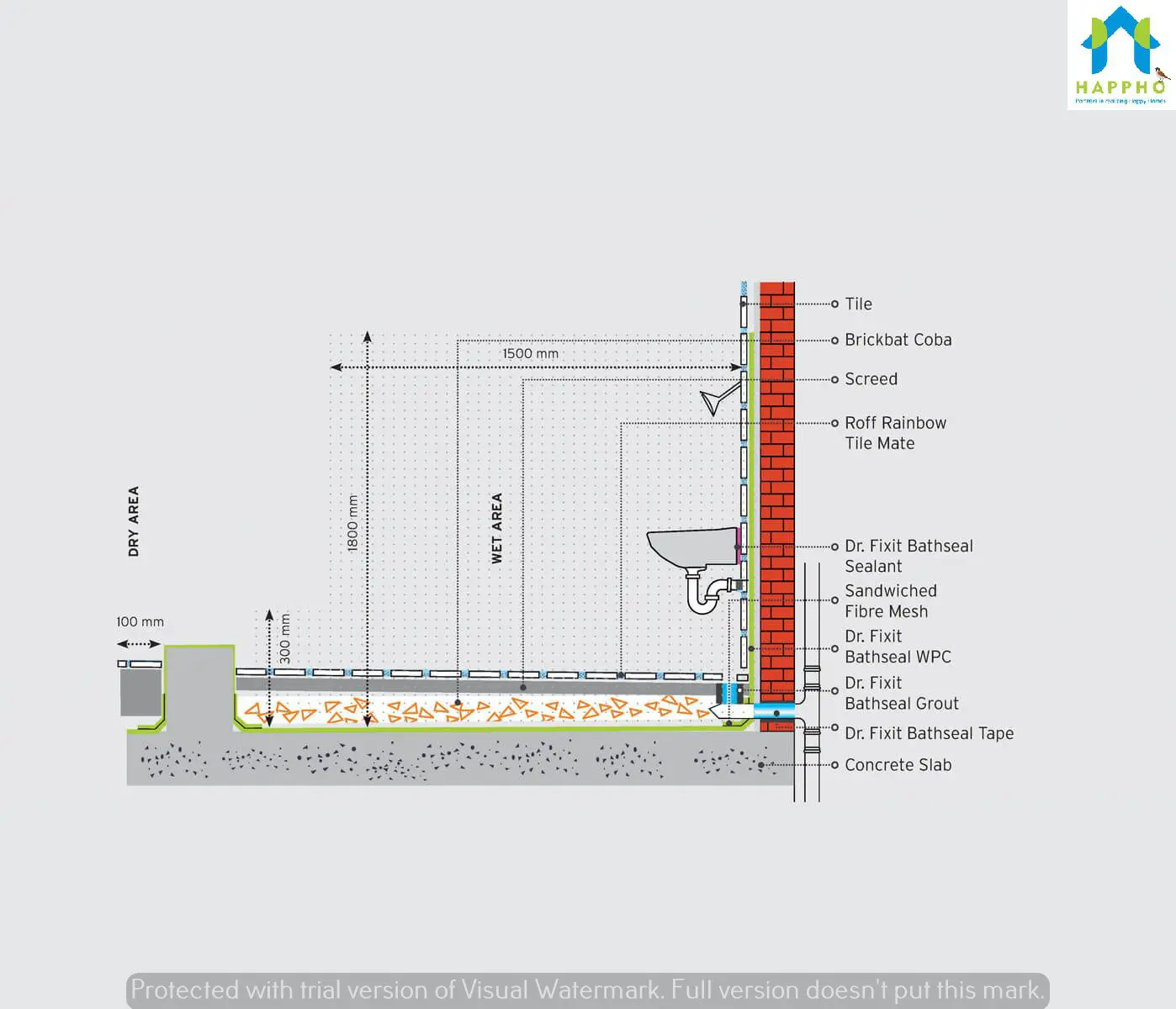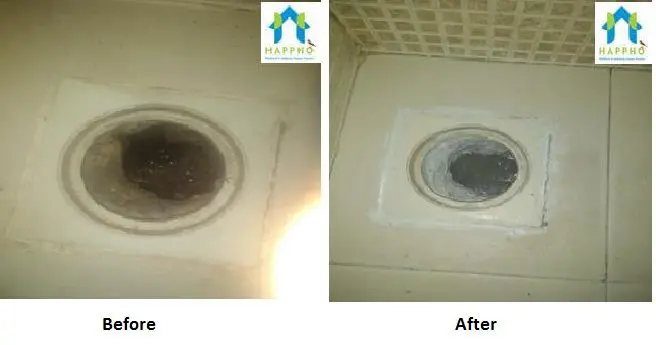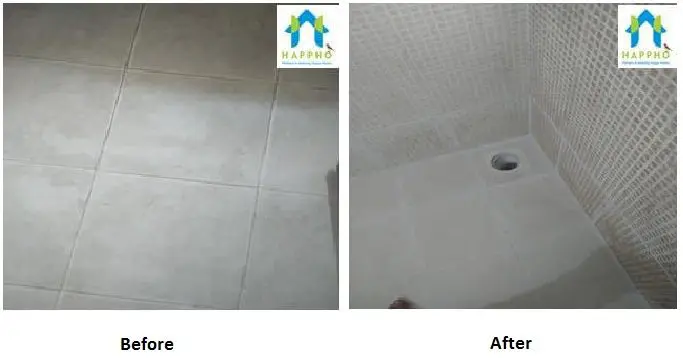Bathroom leakages are usual in Buildings & Apartment. Leakages are the main concern to the residents living in the buildings. Leakages can lead to many issues like Peeling of paint, Fungi formation, and sometimes may also cause the reinforcement steel to corrode.They can be very unpleasing to sight and can cause a health hazard to the residents.
Leakages through bathroom usually affect either the Ceiling of the flat that is directly below or the Adjacent Wall (Wall Common to the bathroom).
Usually, leakages occur because of distress of the waterproofing layer, Nahanni trap gaps formed due to scouring of mortar around it with time, from bathroom fixtures joints & because of damages or joint opening of concealed inlet and outlet pipes.
The following could be possible causes of leakage from a bathroom, Annual times there could be more than one causes of leakage in a bathroom.
Have a leakage at your Home?. We help you get it rectified.
For any water related issue please send us enquiry.
1. Leakages through Bathroom Flooring/Slab
If there is some dampness observed in the ceiling of your bathroom, the following might be some of the root causes. You should check the bathroom of the flat right above yours and get the leakage sealed.
The reasons Could Be
- Insufficient waterproofing system adoption.
- Improper execution of waterproofing system adopted
- Wear & tear/distress of the waterproofing layer with time.
Corrective Measures are
- Option 1: Polyurethane grout injection to the ceiling,it requires damp surface.No breaking and rebuilding of bathroom flooring required, least inconvenience to residents.Access to originating unit is also not required once the root cause has been established.
- Option 2: Need to break bathroom flooring and its existing waterproofing built up and redoing the waterproofing system again starting from concrete slab (with stage wise water pounding test to check the w/p system) .Access to originating unit is required and causes inconvenience of residents.
Also Read : 7 Reasons Why Regular Home Maintenance Is Required?
Clean the surface thoroughly to get rid of all contaminants. Apply tile grout with water proofing agent on tile gaps both on bathroom flooring and dado tiles up to 2 feet height and keep it for 24 hrs for curing and PU injection should done with high pressure in concrete from roofing of downward floor.

2. Leakage through floor (NAHANI)Trap
Nahani trap (fixed in bath floor) is a water trap in the waste pipework to give a water seal to the drains or outside atmosphere; a water trap prevents smells, bacteria and insects entering the bathroom.
The Reason Could Be
While fixing tiles in a bathroom, the gap between nahani trap and tiles should be sealed with polymer modified mortar (giving watertight periphery), but these are generally sealed with cement paste ,this cement paste get erode with time (also do not bond with PVC Nahani Trap) and allow water to seep through tile bedding and leading to damp walls.
Corrective Measure is:
The gap between nahani trap and tiles should be checked and sealed with polymer modified mortar (giving watertight periphery), incase damp walls of bath unit are observed.

3. Leakage through tile Joint Opening
The reason Could Be
Tile joint (on wall or floor) are generally filled with white cement, with time these joints get opened as white cement are not the right material to seal the joint.As tile joints get open, water seeps through this joints and damp the walls leading to peeling of paint from another side of wall, which may further aggregate to fungus and mould formation harming health of residents (especially senior citizens and kids)
Corrective Measure Is:
Tile joints should be sealed with waterproof grouts and preferably using an epoxy grout.They form watertight joints and do not allow seepage to water through them.
Tile joints need periodic maintenance in a bathroom.
As a good construction practice, bath sunk waterproof coating to be carried 1’ above the sunk height.As wall are waterproofed this also helps in avoiding seppage from wall though there might be tile joint opening (1’ height of bath unit is more prone to water splashes).

4. Leakage Through Fixture of a Bathroom
Leakages occur from bathroom fixtures joint which are not visible to our naked eyes.
Concealed plumbing on wall may require an extension piece to fix with bath fittings (faucets, angle/stop cocks etc.).The extension piece may get cracked due to water pressure, leading to water leakages.
If leakages are observed Bath fittings to be checked, and if extension piece are found to be cracked they need to replaced immediately
5. Leakage Through Concealed Pipes
If heavy leakages are observed a height around the bath fixture (visible from the opposite site of the bath unit), probably Concealed Plumbing pipes joints are opened or damaged internally.
In above case, first check the pressure in concealed pipeline, time, If the pressure drops with time we need to infer that concealed Plumbing pipes joints are opened or damaged internally.
To repair same, tiles are to be broken to open the concealed piping to identify the part to pipe to be replaced to fix the leakage.
Post pipe replacement do the pressure testing again before re-fixing the tiles.





